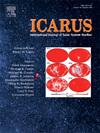The seasonal variation of the Martian South Polar Seasonal Cap (SPSC) is a significant factor to influence Mars atmospheric cycle, which has been continuously observed in previous missions. The SPSC degrades asymmetrically throughout the Martian seasons. However, developing a general description for this asymmetric recession is challenging, and this is crucial for identifying key stages (timesteps) which represents moments of special attribute throughout the recession. Here, we present the Martian Year 36 (MY36) results from the continuous observation of the Martian SPSC by the Moderate Resolution Imaging Camera (MoRIC) onboard the Tianwen-1 orbiter. A time-series of digital orthophoto maps (DOMs) characterizing the south cap were collected ranging from the solar longitude (Ls) 210° to 332°. A seasonal recession model of the cap was established by incorporating a 5th-order polynomial fitting of the time-series on cap latitude, from which the first derivative (recession rate), second derivative (acceleration), and third derivative (jerk) can be obtained. This methodology enables the extraction of critical timesteps that facilitate the categorization of the recession into distinct phases, each characterized by its recession rate and other factors. By the visual interpretation of remote sensing images obtained by Tianwen-1 and the result of timesteps showed that the pause time of the South Polar Residual Cap (SPRC) is about Ls = 324.5°-328° with an area of 7.9 × 104 km2. The discrepancies between our results and previous investigations indicate that the Martian climate presents inter-annual fluctuations. The MoRIC image data can be used to quantitatively capture the fine recession dynamic of the southern polar cap.The continuous operation of the Tianwen-1 orbiter will enable further data analysis for the dynamics of the Martian polar caps. This will provide observational constraints for Martian climate models and crucial information for the research of the Martian modern climate.


